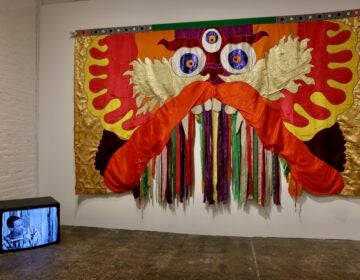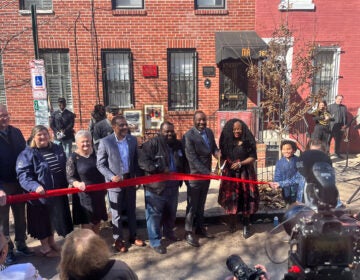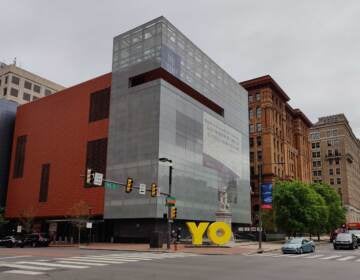Bible Museum breaks ground at Independence Mall
A forthcoming Bible museum at Independence Mall will add scriptural perspective to American history.
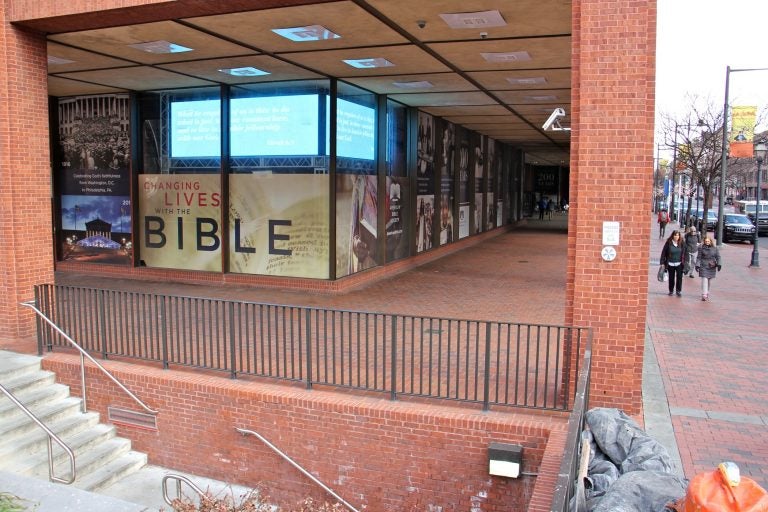
The future Faith and Liberty Discovery Center will expand to occupy the covered walkway at the corner of 5th and Market streets, opposite the National Museum American Jewish History and Independence Mall. (Emma lee/WHYY)
Construction has started on a new museum on Independence Mall in Philadelphia.
The Faith and Liberty Discovery Center, under development by the American Bible Society at Fifth and Market streets, will be a religious-oriented attraction tracing the impact of the Bible on American life.
Shortly after the nation’s founding, many felt that the only way this experiment in democracy would work is if the country had a moral center. So the American Bible Society was formed in 1816 to make sure everyone had access to a Bible.
Its founders included the president of the Continental Congress, Elias Boudinot; Supreme Court Chief Justice John Jay; and Francis Scott Key, composer of the national anthem. It its two-century history, the society said it has printed and distributed more than 6 billion Bibles in almost every language.
In 2015, the society moved its headquarters from Manhattan to Philadelphia’s Old City. When it leased two floors at the corner of Fifth and Market (aka the Wells Fargo building), the landlord gave it the option of renting out the ground floor, a stone’s throw from the Liberty Bell and directly across the street from the National Museum of American Jewish History.
The opportunity to be part of Independence Mall’s historical tourism was too rich to pass up.
“We found ourselves standing on Independence Mall and dreaming about what this could be,” said Pat Murdock, executive director of the Faith and Liberty Discovery Center. “We began to think about, and do the research about, why people are coming. What are they looking for? Is there any value we can add to that story that is authentic, historically accurate, and inspirational – that helps people in life?”
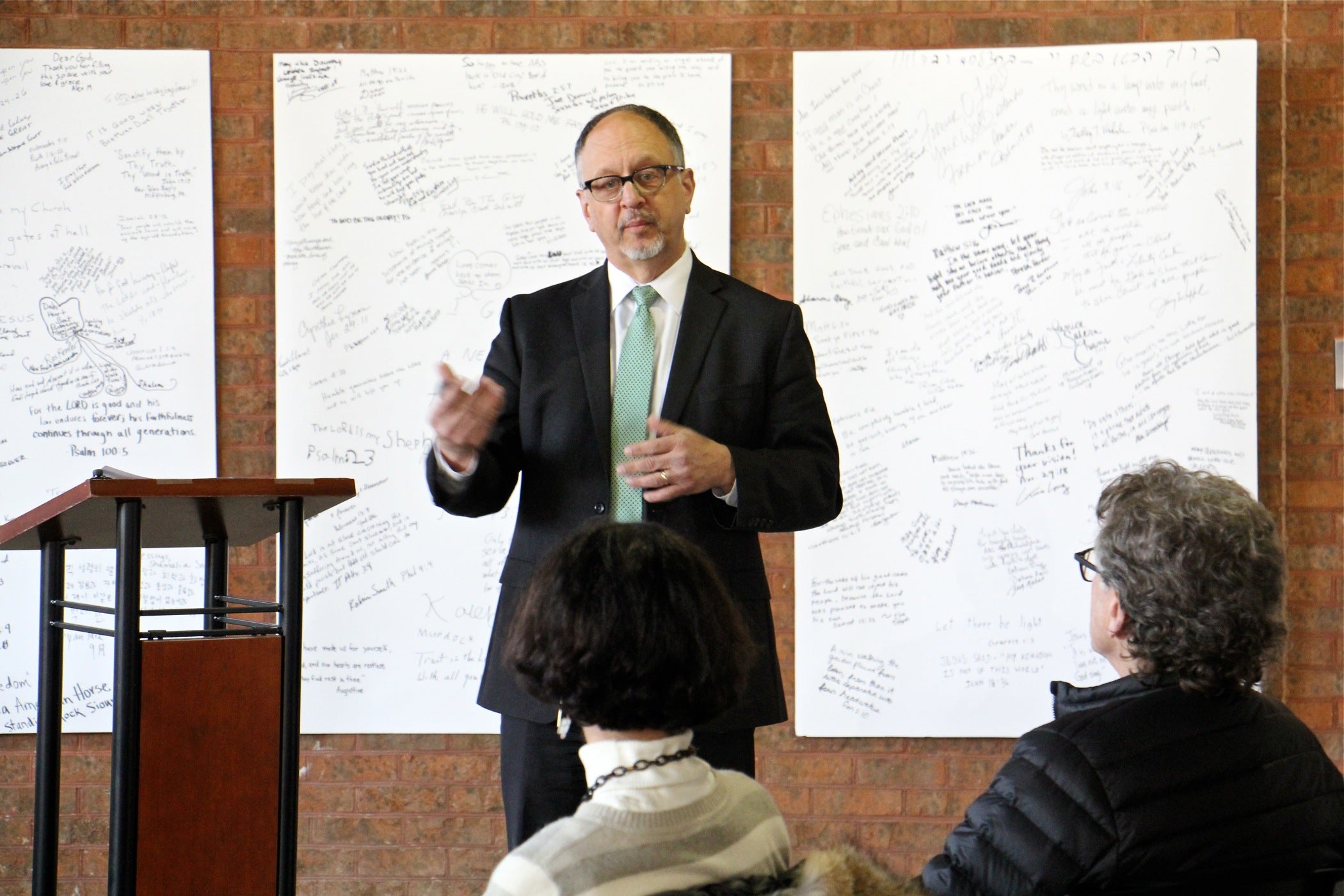
With more than 80 percent of the $60 million cost raised, the society has broken ground on what will be a 26,000-square-foot museum experience, including five digitally interactive galleries focused on historical stories of faith, liberty, justice, hope, and unity.
What had most recently been the offices of a telecommunications company will be radically renovated to accommodate the new tenant. The exterior glass walls of the building will be demolished to expand the interior space over what is now a brick sidewalk. An outdoor pavilion will be constructed with a large spiraling sculpture as the centerpiece.
The exhibitions will start with the story of William Penn, as a Quaker in the New World, and move into issues of emancipation (the society began as an anti-slavery organization), the civil rights movement, and moments of national crisis such as 9/11.
Murdock said the content will be designed to dovetail with the historical narratives of the center’s neighbors: the National Constitution Center, Independence Hall, and the National Museum of American Jewish History.
“We’re bringing the faith perspective,” he said. “The story of how faith and scripture helped motivate and inspire and shape not only the ideas we say we stand for as a republic, but also looking through the eyes of individuals like Martin Luther King or Dorothy Day or Frank Capra, who were inspired by their faith to continue to shape the idea of this American experiment.”
At a preview event on Thursday in the gutted, pre-demolition space, Murdock presented a prototype of the technology planned for the museum. Visitors will be able to use a hand-held baton – a “lamp” – to interact with the exhibitions. The baton will track interest in certain exhibits and store content to a personalized website visitors can access later.
The technology will be – so far – unique to the Philadelphia region. A similar device — a “pen” — is used at the Smithsonian’s Cooper Hewitt Design Museum. It is meant to encourage visitors to continue to engage with the museum’s content after their visit. The two museums both hired the same design company, Local Projects, to develop the application.
The ticketed museum – $10 for adults, $7 for children – is expected to open in November 2020.
WHYY is your source for fact-based, in-depth journalism and information. As a nonprofit organization, we rely on financial support from readers like you. Please give today.



